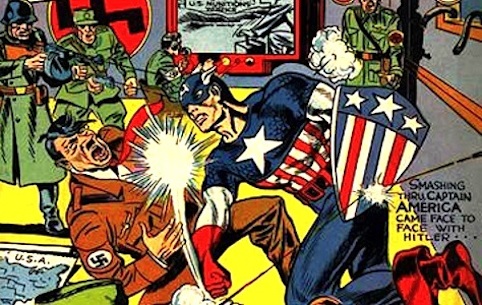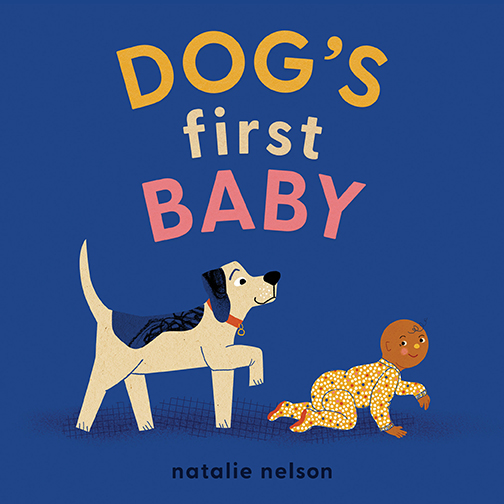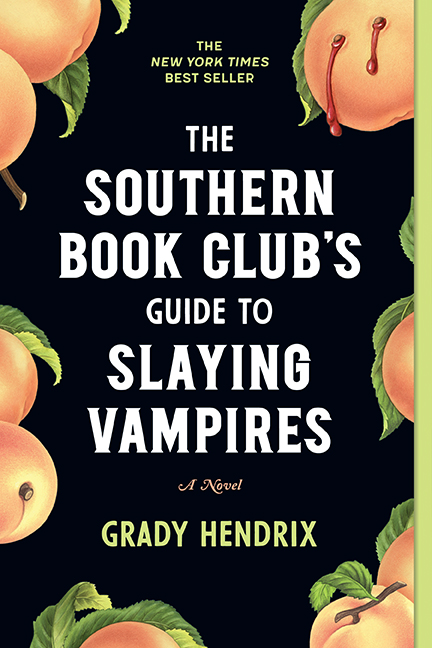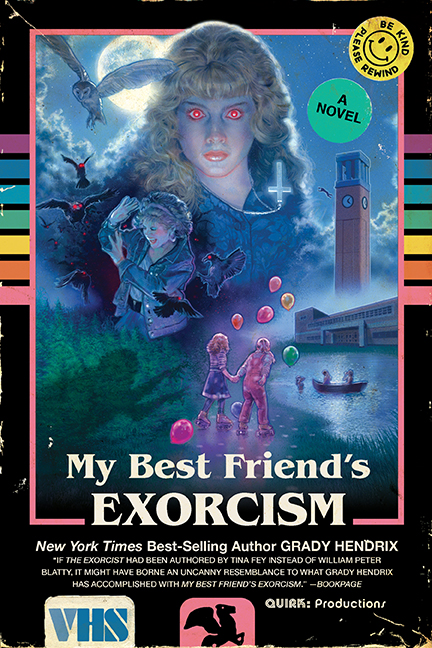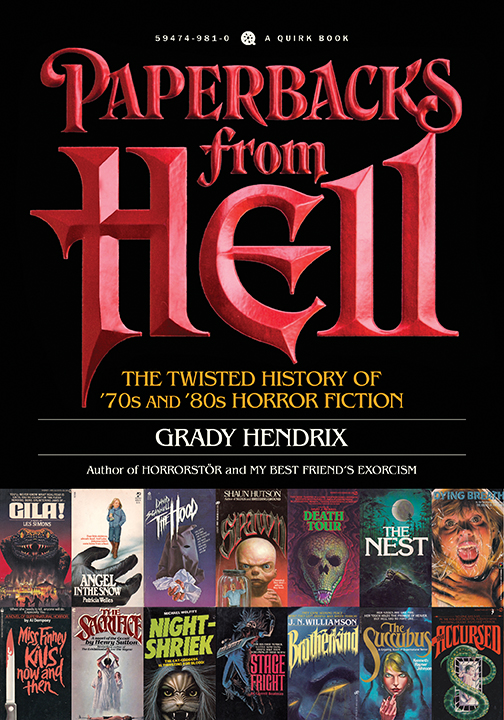Our Blog
Ka-POW! The Top 10 Punches in Comic Books
They tell ya, ‘Never hit a man with a closed fist.’ But it is, on occasion, hilarious.”
—Captain Malcolm Reynolds
The fine folks here at Quirk Books asked me compile a list of my favorite punches, which I thought was pretty open-ended—like punches I've received? Punches I've delivered? There aren't even ten items on those lists combined. I'm not really big into boxing, either, so I decided to limit myself to great punches in the realm of comic books.
Posted by Thom Dunn
Three Bookish Alternative Oktoberfest Celebrations
Oktoberfest is the annual German harvest festival, a citywide fair in Munich full of beer and bratwurst that takes place over sixteen days leading up to the first weekend of October. It’s awesome, or so my German friend tells me, and given my affinity for all things beer and meat and revelry, I tend to believe him (although I am mostly indifferent towards lederhosen).
I realize, however, that not everyone shares my love for such delicious gluttony. But rather than rudely asking what the hell is wrong with you and how could you not love malty lagers, tasty bratwurst, and lots of drunken singalongs, I’ve come up with a list of three alternative Oktoberfests for you to enjoy in those first days of autumn, all of which have been inspired by my other favorite thing that’s not booze, meat, or music — which, of course, is books.
Posted by Thom Dunn
Seven Cocktail Recipes & Drink Suggestions, Inspired By Our Favorite Pieces of Literature
Mint Julep, Photo by Robert S. Donovan
Cocktail recipes and drink suggestions, inspired by our favorite pieces of literature! Sip away whilst reading a great piece of writing. Just don’t drink too much. We’d like you to remember it later.
—

Gimlet photo by Michael Korcuska
Gimlet & Raymond Chandler’s Mystery Novels: Philip Marlowe, the primary character in Raymond Chandler’s mystery novels, helped to cement the classic noir archetype of the hard drinkin’ detective. In The Long Goodbye, Marlowe spends an awful lot of time drinking gin gimlets with his new buddy, Terry Lennox. According to Lennox, “‘What they call a gimlet is just some lime or lemon juice and gin with a dash of sugar and bitters. A real gimlet is half gin and half Rose’s Lime Juice and nothing else. It beats martinis hollow.”
And so:
2 oz Gin
2 oz Rose’s Lime Juice
Be a totally badass detective and get wrapped up in all kinds of crazy, violent, and convoluted conspiracies involving sexy women with guns and even more alcohol.
Posted by Thom Dunn
Six Real-Life Authors Who Made Themselves Into Fictional Characters
Nicolas Cage as Charlie Kaufman in Adaptation
Note: In writing this, I realized that I appear on film with 2 of these writers, which is starting to make me wonder if I’m actually a fictional character myself. My girlfriend insists I’m real, but I’m still not entirely convinced, despite the fact that she poked me a lot and it really hurt.
It’s generally accepted that there’s a fine line between reality and fiction, but sometimes it gets particularly difficult to tell just where that line is — and these authors don’t help. We’re told not to confuse the artist and the art, that a first-person voice is not necessarily that of the author, that the views and opinions of the characters do not necessarily reflect those of the person that created the characters.
But then sometimes, the person who created the characters is a character, and then things just get all like super confusing and meta-heady-wackiness ensues and you’re not really sure where one thing starts and the other begins. And so without any further ado, I present to you 6 real-life authors who are also fictional (by their own pens, no less).

Jason Schwartzman as (fictional) Jonathan Ames
Jonathan Ames: Jonathan Ames the writer first appeared on the literary scene in 1989 in his debut novel I Pass Like Night, which recounts the narrator’s various sexual exploits in ways both shocking and hilarious. Some of these encounters are later recounted (albeit with some differences) in his debut graphic novel The Alcoholic, which explicitly features a protagonist named Jonathan A, who is also a novelist.
Later, Jonathan Ames (the writer) created a TV show called Bored To Death (based on his own short story of the same name) which focuses on the misadventures of a novelist-turned-amateur-detective named Jonathan Ames, whose debut novel is called I Pass Like Night (also you can totally see me in the Season 2 finale at the Brooklyn Comic-Con). As Ames himself has said in many interviews, “Whenever I wrote fiction, people always seemed to think that what I wrote was true, that it was entirely autobiographical. And when I would write non-fiction, they often accused me of exaggeration and fictionalization…so I decided to give it a try and thoroughly confuse my few readers.”
And I think he has succeeded at that.

Kurt Vonnegut: Much of Vonnegut’s work features, or at least alludes to, a fictional sci-fi writer named Kilgore Trout, who is generally believed to be a fictional image of Vonnegut himself. But then sometimes Vonnegut himself also ends up in his own stories — occasionally even accompanied by Kilgore Trout. He appears as a character in the novel Breakfast of Champions, observing and even interacting with several other fictional characters in the story.
But it’s Vonnegut’s final novel, TimeQuake, where things get trippy. As explained in the first chapter of the book, the original idea for the novel TimeQuake was that the universe began to momentarily shrink, but then changed its mind, forcing everyone to re-live the last 10 years (give or take) of their lives, precisely as they happened the first time. According to Vonnegut, he had some difficulty turning this into an actual interesting narrative, so the idea was scrapped, and the book that ultimately became TimeQuake was a combination of autobiographical anecdotes, and elements of what would have been his original intended story (with Vonnegut essentially telling readers what would have happened in the book he was trying to write).
However, Vonnegut still recounts the autobiographical parts of the book in terms of the timequake from the original plot — rather than simply recounting memories of the last ten years, he tells these personal stories in terms of having re-lived them on autopilot, thanks to the effects of the fictional timequake. And so, one presume that while the stories themselves are non-fictional, the timequake itself was a piece of fiction…or was it? (Image via Letters Of Note).
Posted by Thom Dunn
Five Of Our Favorite Fictional Bands
Since its inception, rock and roll has always had a unique relationship with fiction and pop culture.
From Elvis’s famed white fringe jumpsuit, aping the Captain Marvel comic book, to the great rock operas and concept albums such as The Who’s Tommy, or David Bowie’s The Rise and Fall of Ziggy Stardust and the Spider from Mars, and to the modern-day “jukebox musicals” that line the streets of Broadway and beyond, the link between rock and roll music and both literary and genre fictions are undeniable. Even heavy metal, and its various subgenres, has often been obsessed with the imagery of horror stories and fantasy.
As such, it’s only fair that fiction started taking its cues from rock and roll. Below, you’ll find some of my personal favorite fictional bands (some of whom may or may have broken their way through page/screen and found a way into our own reality).

The Archies: This one is way too many levels of meta. The Archies were a garage band formed by the cast members of the cartoon The Archie Show, which in turn was an adaptation of the long-running comic book series Archie. The songs, which featured heavily into many episodes of the cartoon series (but also the comic book, don’t forget), where actually written and performed by Ron Dante and Andy Kim, who themselves were neither cartoon nor comic book characters but rather real live flesh-and-blood human beings (weird, right?). Are you still with me? Good.
The Archies — under the guise of Archie Andrews, Reggie Mantle, and Jughead Jones — scored a number of Top 40 hits, including “Sugar, Sugar,” which was named the Billboard #1 song of the year in 1969, and still remains a popular icon of 60s bubblegum pop. How many other fictional bands can make a claim like that? Also check out this fantastic cover of “Sugar, Sugar” by Mary Lou Lord and Semisonic.
Posted by Thom Dunn
ARGH (Our) Top 10 Favorite Pirates
Ahoy! Aaaargh! argh argh argh argh RUM me matey’s argh argh Walk the plank with ya! argh argh argh argh landlubber n’ wot ye swashbuckled git argh argh argh argh n’ I’ll feed ye to the fishies n’ argh argh argh avast me left hand’s a hook but I sail the seven seas argh argh argh (more rum) argh ARGH!
TRANSLATION: In honor of International Talk Like A Pirate Day, here’s a list of 10 our favorite pirates. Argh.

1. CAPTAIN HOOK: Ah, yes. The scourge of Neverland, thus affirming the popular that all grownups are in fact evil pirates. Also known as “Black Stache,” the man we know as Captain James T. Hook (although even that is not his real name) is believed to have been a shipmate of the famous pirate Blackbeard, as well as the only man that Long John Silver himself ever feared. As for what brought him to Neverland in the first place, we may never know for certain, although storytellers have dared to reveal their own theories of this deep, dark secret.
Hook is perhaps the most iconic of the hook-handed pirates, having lost his right appendage in a swordfight with that rascally Peter Pan. In the true fashion of a deadly pirate, Hook fears only two things in the entire world: the crocodile that ate his severed hand, and the sight of his own blood.

2. LONG JOHN SILVER: The progenitor of all things that we have come to associate with pirates, despite the fact that he was merely the quartermaster, the man responsible for leading the boarding party onto the ships of their victims, and not a Captain of his own ship. With a prosthetic pegleg on his left side and a fast-talking parrot named Captain Flint (after the actual Captain of the ship, because he was such an intimidating figure that even his own boss was scared of him), the depiction of Long John Silver in Treasure Island set the bar for all fictional pirates to come.
His moral ambiguity, mutable allegiances, and strange sense of honor among thieves made him an intriguing and likeable rogue. Plus he has his own fast food chain, which is pretty much the most badass thing that any pirate has ever done.
3. THE SEA CAPTAIN FROM TALES OF THE BLACK FREIGHTER: Because in a world with actual superheroes it wouldn’t make sense for anyone to read superhero comic books, people in the world of Alan Moore’s Watchmen read pirate comic books instead. Through the course of the series, there is a young boy sitting by a newsstand on the street and reading a comic book called Tales of the Black Freighter, and the panels and narration from that comic book end up being intertwined with the panels and narration from the Watchmen comic book that you’re reading because, metafictional parallel narrative devices I guess. Is that a good reason?
Tales of the Black Freighter tells the story of a man known only as the mariner or the Sea Captain who is the last serving member of his shipwrecked crew. He sees the ominous, evil The Black Freighter pirate ship approaching in the distance, and tries desperately to return to his home before the ship attacks and destroys his family. Not to give too much, but the story ultimately serves as a parallel to the story of Watchmen as a whole, and one character’s journey in particular. But this is not happy drunk pirates; this is dark, scary, evil pirates who do horrible, horrible things (let’s just say the story starts with someone building a raft out of the dead, bloated, waterlogged bodies of his former crewmates, and it goes from there).
Posted by Thom Dunn
